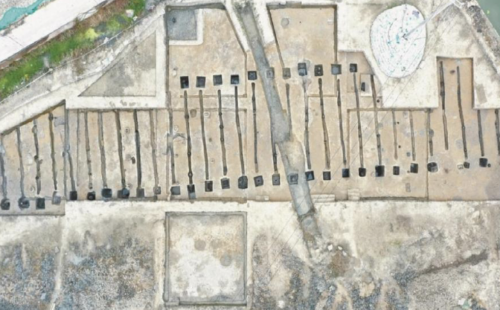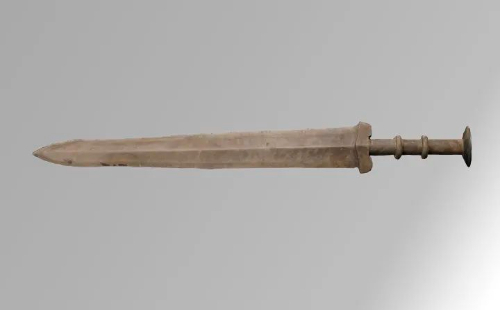Shaoxing archaeological discovery reveals Eastern Zhou Dynasty links

A bird's-eye view of the Tingshan ruins site in Shaoxing, Zhejiang province. [Photo/WeChat ID: sxfabu]
The Tingshan ruins site in Shaoxing, Zhejiang province, made it to the top 10 archaeological discoveries for 2023, according to an announcement by the Zhejiang Provincial Institute of Cultural Relics and Archaeology on Jan 21.
Situated in the Yuecheng and Keqiao districts, spanning approximately 7 square kilometers in a C-shaped basin north of Kuaiji Mountain, the site has undergone archaeological exploration since 2020.
Through collaborative efforts between provincial and local archaeological institutes, researchers have uncovered 10 significant settlements dating back to the Eastern Zhou Dynasty (770-256 BC), including the Tingshan and Nanshan settlements.
Lead archaeologist Xu Xinmin emphasized the noteworthy findings in the northern part of the Tingshan settlement, where a waterfront platform and sacrificial pit were discovered, housing various ritual items. In the southern region, a substantial north-south building foundation on an artificial terrace, measuring 56 by 10.5 meters, was revealed.

A bronze sword found inside Nanshan settlement. [Photo/WeChat ID: sxfabu]
Archaeologists exploring the Nanshan settlement unearthed a wealth of artifacts, including primitive porcelain, stone tools, potteries, bronze tools and weapons, as well as plant and animal remains such as carbonized rice, peaches, plums, grapes, cattle, pigs, horses, fish, and tuna.
The Tingshan ruins site provides a comprehensive understanding of the core settlements of the Yue State during the Eastern Zhou period, shedding light on social structures, economic activities, and daily life in the marshy landscape, according to the Zhejiang Provincial Institute of Cultural Relics and Archaeology.





 play
play